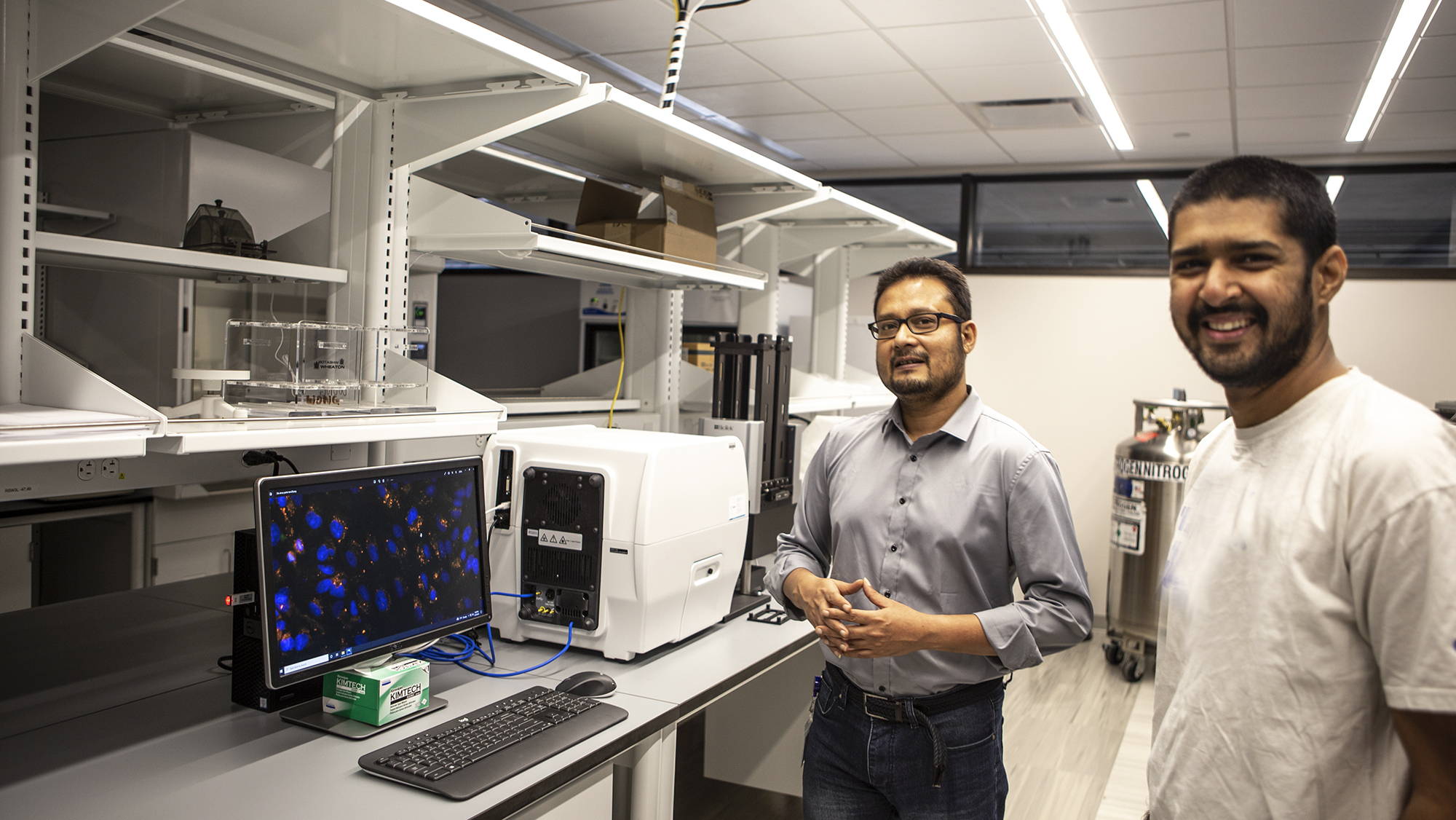Sayantan Datta Group: Macular Degeneration
The Problem
Age-related macular degeneration (AMD) causes a progressive loss of central vision. It is also the leading cause of blindness among the elderly but has very limited treatment options.
The Focus
Researchers in the Datta Group focus on molecular pathophysiology of AMD in retinal pigment epithelial (RPE) cells – the cells that form the blood-retina barrier. This poses some unique challenges, as the RPE cell is one of the most energy demanding and stress-exposed cell types in the human body. Diseased RPE cells are a salient feature of AMD. Research focuses on understanding how this dysfunction develops as a way of arresting the progression of AMD.
The Approach
The overarching interest of the lab is to study mitochondrial function (mitophagy) and oxidative stress response in iPSC-RPE using cell biology and ‘omics’ approach and implementing small-molecule based therapies in mouse models. Current projects in the lab involve looking at EMT (epithelial to mesenchymal transition) and interferon signaling in the RPE. Our lab is funded through a K99/R00 award from NIH, several private foundation gifts including Dobbs and Hart Foundations and Departmental Funds.Ongoing Research
Mitophagy-driven EMT
Sponsors: National Institutes of Health, Emory Eye Center
Collaborators: Johns Hopkins Research Division
Sayantan Datta and the Macular Degeneration Group discovered a novel mitochondrial retrograde signaling where mitophagic impairment through Pink1 silencing alone was able to drive EMT of the RPE cells and interestingly this pathway was critically dependent on the oxidative stress response pathway. Please check our latest publication on this published in the journal Autophagy:
Interferon signaling in the RPE
Our RNA seq studies revealed that STAT1 mediated interferon signaling is a key player in controlling EMT and cell viability in the RPE and we are investigating how interferon signaling connects to mitochondrial dysfunction and cell fate in the RPE.
Stem cell derived RPE replacement therapy
Geographic atrophy is a hallmark feature of late-stage AMD. This occurs when RPE cells die off and the only recognized therapy is the exogenous replenishment of those RPE cells. The Macular Generation Lab is part of a multi-PI collaborative team that includes basic scientific researchers John Nickerson and Jeff Boatright, vitreo-retinal surgeon Dr. Jiong Yan, and biomedical engineering professor Mark Prausnitz. The main thrust of this project is to develop RPE cells from stem cells so we can successfully inject them into animal models of geographic atrophy. Ultimately, we seek to develop a minimally invasive replacement therapy for advanced AMD patients with geographic atrophy.


